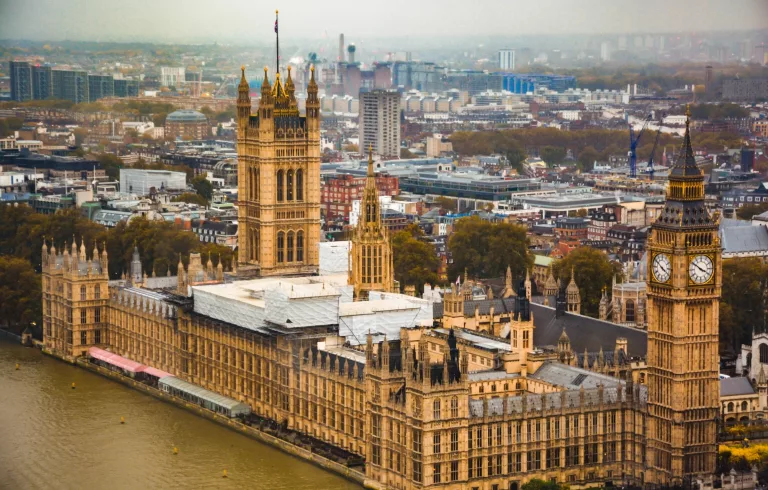The Building Safety Act, the golden thread and how it effects your buildings' lifecycle
The Building Safety Act 2022 (BSA) is the UK governments response to the tragedy at Grenfell towers. This lengthy piece of legislation is designed to prevent another disaster, by bringing building safety to the forefront of the construction industry and protect leaseholders from remediation costs associated with fixing building safety issues. Inevitably it will affect the way Building Owners, Developers, Contractors and Construction product manufacturers do business going forward.
In this blog, I intend to introduce what has changed in UK construction law, what the respective parties, i.e those mentioned above will be required to do and how best they should prepare for these new changes.
This new legislation will become law in stages, with the first, The Building Safety Act coming into effect from 28th June 2022. It sets the foundation for further legislation planned, which will detail exactly what is required as part of the process. Further bills are thought to come into effect within 18 months after royal assent of The Building Safety Act which was in April ’22.

What has changed:
- An extension to the Limitation Act 1980 gives, both, dwellings that are unfit for habitation and any building that is in breach of the Building Regulations under Section 38, the ability to bring legal claims against developers and contractors for up to 15 years.
- Changes relating to the Defective Premises Act 1972 (DPA) consist of a broadening of the cause of action to include refurbishments as well as new builds.
- The BSA now allows those who claim under the DPA to bring claims up to 30 years after completion of a dwelling.
- There are also changes reflected in the DPA, for a cause of action relating to construction products that are mis-sold or unfit for purpose. Cladding products can now retrospectively be claimed against for 30 years and all other construction products for 15 years.
- · A new Home Ombudsman Scheme to protect leaseholders from paying remediation costs. Membership will be mandatory for housebuilders, and it is designed to enforce them to pay fire safety remediation costs of their buildings. Any developer that fails to comply with this, risks having any planning permissions or building works they are involved in completely halted by the government.
Although these changes affect all buildings, the initial focus of the BSA relates to ‘higher risk buildings’, defined as buildings above 18 metres in height or at least 7 storeys, with 2 or more residential units. The exact nature of what the relevant parties will have to do to comply with these changes is planned in further secondary legislation but initially these see the introduction of:
- A golden thread of vital safety information about the buildings design, build and management must be captured and maintained digitally.
- Duty holder regulations designed to ensure that building work (including design) complies with building regulations.
- All occupied buildings must have at least one accountable person responsible for putting the necessary arrangements in place to manage and maintain building safety risks in their buildings.
- A Building Safety Regulator (BSR), tasked with enforcing a more stringent regime relating to all of the above.
The Golden Thread; The 3 Gateways and the occupation stage.
- Done by principal designer, developer. Completed during planning of the building and includes a Fire statement about water supply and emergency access, similar to the existing design & access documents.
- Done by developer. Prior to building works commencing, the building design and methodology must be outlined to ensure safe construction. They are also required to anticipate any inevitable changes that take place during the construction phase.
- The final completion stage, also done by the developer. This is a series of final checks to ensure that the building has been constructed as intended and can be handed over and operated safely.

Once the building has been handed over, a safety case must be developed, usually done by the building owner, that demonstrates they can manage the fire and structural risks safely. Once completed, as long as it satisfies the BSR, a certificate stating compliance will be issued. The documents required as part of the golden thread must be maintained over the lifecycle of the building as there will be ongoing checks done by the BSR to ensure compliance.
What the respective parties will be required to do:
- Implement a digital repository to store and maintain all vital building safety documents required as part of the golden thread. Further details of the requirements of these documents and the facility the BSR will use to review them will most likely be published as part of the secondary legislations.
- Comply with building regulations as stated above.
- Further develop practices to mitigate building safety risk. As part of BSA, building safety risk means a risk to the safety of people from the spread of fire and structural failure. It should be noted that any other matter prescribed by regulations under section 61 of the BSA 2022 can later be added if deemed necessary.
- Put in place at least one accountable person per building.
How best they should prepare:
- Investigate appropriate secure digital repositories. The ideal solution would support a permission model enables appropriate people throughout the assets lifecycle to upload and associatively store models, data, documents so the accountable person and Building Safety Regulator can easily review them. Possibly one with Application Programming Interface (API) capabilities, to connect to the facility the BSR chooses to use.
- Establish duties and responsibilities the accountable persons will likely have to undertake to manage building safety risks.
- Prepare for further regulation on construction products. Likely to impact procurement processes and impact on lead time.
- If you’re a building owner, you will also have to become familiar with the new Building Assessment Certificate application process. Failure to achieve this cert before occupying the building will result in hefty fines and other repercussions.
Although this piece of legalisation will only be enforced in England and where applicable, Scotland. I foresee it inevitably will affect the construction industry of Ireland and other jurisdictions and should be considered with proper forethought. Are you prepared for this and the impacts on your buildings’ lifecycle? I would love to hear how you’re planning to implement these changes?
I am a solution consultant at Invicara. Reach out to me if you would like to have a conversation. Stephen.Gilheany@invicara.com
Disclaimer: The information provided in this blog is for general information only. All information provided here is one person’s interpretation and summary and it cannot be used for legal purposes. Invicara holds no responsibility and makes no representation or warranty about the accuracy or completeness of this information.
- https://bills.parliament.uk/publications/46067/documents/1708
- https://www.nortonrosefulbright.com/en/knowledge/publications/bb3df491/the-new-building-safety-act-2022
- https://www.ifsecglobal.com/fire-news/building-safety-bill/#:~:text=Mandatory%20registration%20of%20Building%20Inspectors,information%20(12%2D18%20months)
- https://www.bdonline.co.uk/news/the-building-safety-bill-becomes-law-here-is-what-you-need-to-know/5117263.article
- https://www.legislation.gov.uk/ukpga/1972/35


